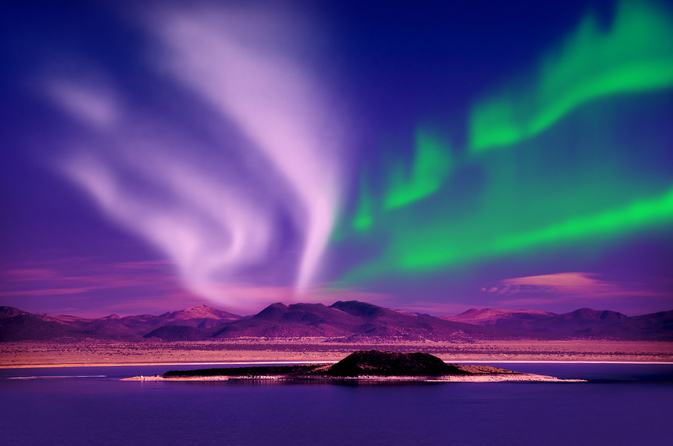IQALUIT, Nunavut – In the sleepy fishing village of Apex in Nunavut, the summer silence is almost eerie – the dark surface of Frobisher Bay is still as glass, its smattering of ice floes motionless; there is not the slightest wind, no trees with rustling leaves, no warbling birds.
It’s a silence those from the busy cities of the south often find disconcerting. Yet it’s common in the vast expanses of the Arctic territory of Nunavut on days when the northern winds come to a halt.
Canadians clamouring for the sights – and occasional utter silence – of their country’s newest territory have more options than ever to travel north and take in the splendours of Nunavut’s Arctic thanks in part to climate change and a burgeoning tourism industry.
There’s fishing, vertical climbing, watching narwhal pods and hiking through remote territorial parks in the warmer months. In the winter, there’s dog-sledding, polar-bear watching or treks deep into the tundra to take in the Northern Lights.
Canadian North and First Air fly direct to Iqaluit, the bustling Nunavut capital, from Ottawa. Canadian North also has a direct summer flight from Halifax, but the airline says it hasn’t made a decision on whether to extend the route past September.
From Iqaluit, a gateway to the high Arctic, there are several flights via both airlines farther north into the territory, including the breathtaking Pangnirtung, nicknamed the Switzerland of the Arctic for its pristine beauty.
The tiny hamlet is nestled on a narrow Baffin Island inlet amid the high walls of a dramatic fjord.
From town, you can book a snowmobile or boat ride to Auyuittuq National Park, with its sweeping glaciers and jagged granite mountains, or visit a former whaling station on Kekerten Island, 40 kilometres away in Cumberland Sound. There’s also plenty of whale-watching to be had; orcas and belugas are among those swimming in the sound.
For those who want to travel north of the Arctic Circle – to experience 24 hours of sunlight, or darkness, depending on the time of year – both First Air and Canadian North also fly from Iqaluit to Clyde River, Pond Inlet, Hall Beach and Igloolik.
In all of those communities, there is an array of outfitters offering uniquely Arctic excursions. Visit the Nunavut Tourism website – nunavuttourism.com – for details on various treks.
In the scenic Clyde River, there are 10 fjords located within 100 kilometres of the town, including the Sam Ford Fjord, the site of world-renowned vertical climbing walls carved dramatically into the mountains by ancient glaciers. The entire Clyde River region is so stunning that it’s now a proposed territorial park site.
Pond Inlet, meantime, is considered one of Canada’s “jewels of the North,” a picturesque village surrounded by mountain ranges. Icebergs are usually within walking distance or a short snowmobile ride away in winter, as are several glaciers and ice caves.
Tiny Hall Beach is the oldest known permanently inhabited community existing north of the Arctic Circle. It’s a prime walrus-watching haven; large herds of the tusked giants often sunbathe on the town’s beaches.
Igloolik, meantime, is an artistic community boasting the only Inuit circus. It’s considered a cultural epicentre for the Inuit; an ancient legend from the area was the basis of the 2001 film “Atanarjuat.”
If travellers opt to stay in Iqaluit, there are countless day trips from the town. Apex, the site of quaint old white clapboard Hudson’s Bay buildings, is just five kilometres away, an easy trek by foot, skis or snowshoes.
Hikers can also venture past the town’s airport – and, unfortunately, a town garbage dump that has been smouldering since May – to Sylvia Grinnell Territorial Park, where hours can be spent fishing for Arctic char, plentiful in the river that runs through the tundra.
There are also waterfalls and archeological sites dating back to the Thule, the ancestors of all modern Inuit, as well as an array of wildlife, including caribou in the winter and spring, Arctic fox and as many as 40 species of birds.
Just southwest of Iqaluit, near the head of the Peterhead Inlet, is a small island called Quammaarviit, an easy day trip from town. It’s accessible by boat in the summer or by dogsled, skis or snowshoes in the winter.
The island was also thought to have been inhabited by the Thule in the early years of the 13th century.
But be warned if opting to remain in Iqaluit: the city is buzzing with construction and humanity, with a population nearing 7,000. Litter is a problem in the town, and it’s plagued with substance abuse and a high suicide rate.
The crime rate fell significantly last year, however, and there are many accommodation options, including Iqaluit’s “boutique” hotel, The Discovery.
The restaurant at the Frobisher Inn, overlooking Frobisher Bay, is top-notch, featuring expertly prepared Inuit “country foods” that include elk, Arctic char and caribou when it’s available. Bear in mind, however, that prices are steep due to the cost of shipping so many foodstuffs to the North.
Shop for Inuit stone carvings by local artists at the downtown Carvings Nunavut, and don’t miss dropping in on the town’s waterfront Nunatta Sunakkutaangit Museum, which houses a collection of Inuit art and artifacts and also sells carvings, prints and jewellery.
And no visit to the Nunavut capital would be complete without stopping in at Iqaluit Enterprises to take home some truly delicious smoked or fresh Arctic char. Some Montreal restaurateurs travel to Iqaluit every summer just to stock up.
